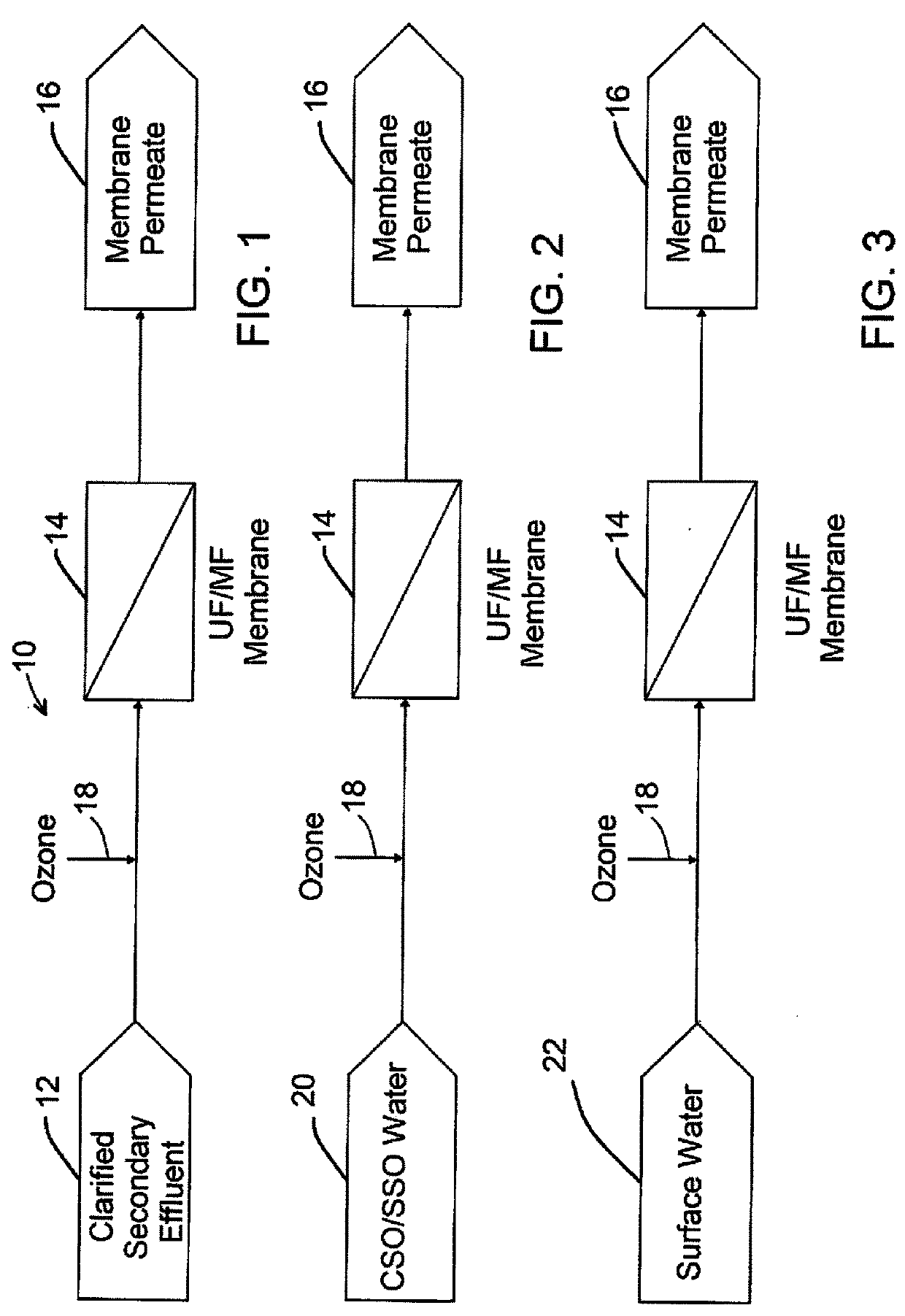Enhanced Membrane Performance Using Ozone
a technology of enhanced membrane performance and ozone, applied in the field of water or wastewater treatment, can solve the problems of consuming more space and energy, becoming expensive to utilize higher ozone dosages in the membrane system, and achieving the effect of reducing or eliminating the fouling of ceramic membranes and increasing the removal of pathogens
- Summary
- Abstract
- Description
- Claims
- Application Information
AI Technical Summary
Benefits of technology
Problems solved by technology
Method used
Image
Examples
Embodiment Construction
[0016]In the drawings, FIG. 1 indicates a wastewater treatment system 10, illustrating clarified secondary effluent 12 from a liquid side of a wastewater treatment plant which may be of typical design. Wastewater in a municipal treatment plant typically is treated in a series of biological treatment zones, after which the outflow from the zones is subjected to settling in a clarifier, typically called a secondary clarifier. See, for example, U.S. Pat. No. 6,712,970.
[0017]A clarifier effluent exits the clarifier as the clarified effluent 12. At this point biological treatment of the clarified liquid has been completed, and tertiary treatment, in the illustrated example, occurs in a membrane zone 14 which can be a series of tanks. The micropore membranes produce a highly clarified permeate as indicated at 16, removing considerable amount of particulate matter, some very fine, from the liquid. The membranes can also remove much of the bacteria present in the clarified liquid.
[0018]Purs...
PUM
| Property | Measurement | Unit |
|---|---|---|
| concentration | aaaaa | aaaaa |
| concentration | aaaaa | aaaaa |
| concentration | aaaaa | aaaaa |
Abstract
Description
Claims
Application Information
 Login to View More
Login to View More - R&D
- Intellectual Property
- Life Sciences
- Materials
- Tech Scout
- Unparalleled Data Quality
- Higher Quality Content
- 60% Fewer Hallucinations
Browse by: Latest US Patents, China's latest patents, Technical Efficacy Thesaurus, Application Domain, Technology Topic, Popular Technical Reports.
© 2025 PatSnap. All rights reserved.Legal|Privacy policy|Modern Slavery Act Transparency Statement|Sitemap|About US| Contact US: help@patsnap.com

